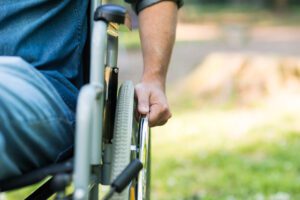Charcot-Marie-Tooth Disease (CMT)
What is Charcot-Marie-Tooth disease?
Charcot-Marie-Tooth disease (CMT), though rare, is one of the most common inherited neurological disorders. CMT is also known as hereditary motor and sensory neuropathy, which comprises disorders that affect the peripheral nerves that lie outside of the brain and spinal cord.
What causes Charcot-Marie-Tooth disease?
CMT is caused by mutations in the genes that are involved in communicating sensory information to the muscles. Different genes are abnormal, depending on the particular type of CMT disease (i.e. CMT1, CMT2, CMT3, etc.), but in all cases, the mutations cause peripheral nerves to slowly degenerate, inhibiting communication to muscles. These mutations are inherited in an autosomal dominant fashion or an autosomal recessive fashion, again, depending on the particular type of CMT. In some rarer cases, this mutation is not inherited and occurred spontaneously in the patient’s genetic code.
What are the symptoms of Charcot-Marie-Tooth disease?
Onset of CMT is usually in adolescence or early adulthood, though some patients develop symptoms in mid-adulthood. The specific neuropathy of CMT affects both the motor and sensory nerves, and the progression of these symptoms is gradual. Thus, typical symptoms of CMT are the following:
- Weakness of foot and lower leg muscles, resulting in foot drop and frequent tripping
- Foot deformities, such as high arches and/or hammertoes
- Lower leg deformities due to loss of muscle
- Weakness and muscle atrophy in the hands
- Difficulty with walking and/or fine motor skills
How is Charcot-Marie-Tooth disease diagnosed?
A CMT diagnosis begins with a review of the patient’s medical and family history and a thorough clinical and neurological evaluation of the patient’s arms, legs, hands, and feet.
If CMT is suspected, the doctor may order an electrodiagnostic test or a nerve biopsy to help confirm a diagnosis.
Genetic testing is also available for some types of CMT.
What treatment options are available for Charcot-Marie-Tooth disease?
While there is currently no cure for CMT, physical therapy, occupational therapy, and orthopedic devices or surgery can greatly help patients cope with the debilitating symptoms of the disease. Some of these orthopedic devices include leg and ankle braces, thumb splints, and custom-made shoes to improve gait.
Pain-killing drugs can also help patients who have severe pain from the disease.
Where can I find more information on Charcot-Marie-Tooth disease?
Charcot-Marie-Tooth Disease (CMT) Articles

Let’s Cheer Jenny on through the Last Lap of her Incredible Journey

Jenny Decker’s Journey around the world with Charcot-Marie-Tooth Disease continues

A Surprise Diagnosis: Raiden’s Journey with Charcot-Marie-Tooth Disease and Kidney Disease

Laura’s Journey with Charcot-Marie-Tooth: From Patient to Advocate

Nurse JENNY DECKER is Sailing Around the Globe to Raise Awareness for Charcot-Marie-Tooth Disease – UPDATE

September is Charcot-Marie-Tooth Disease Awareness Month: Spreading Rare Disease Awareness

‘Just a Lap’ for CMT: Jenny Decker’s Sailing Journey Around the World





